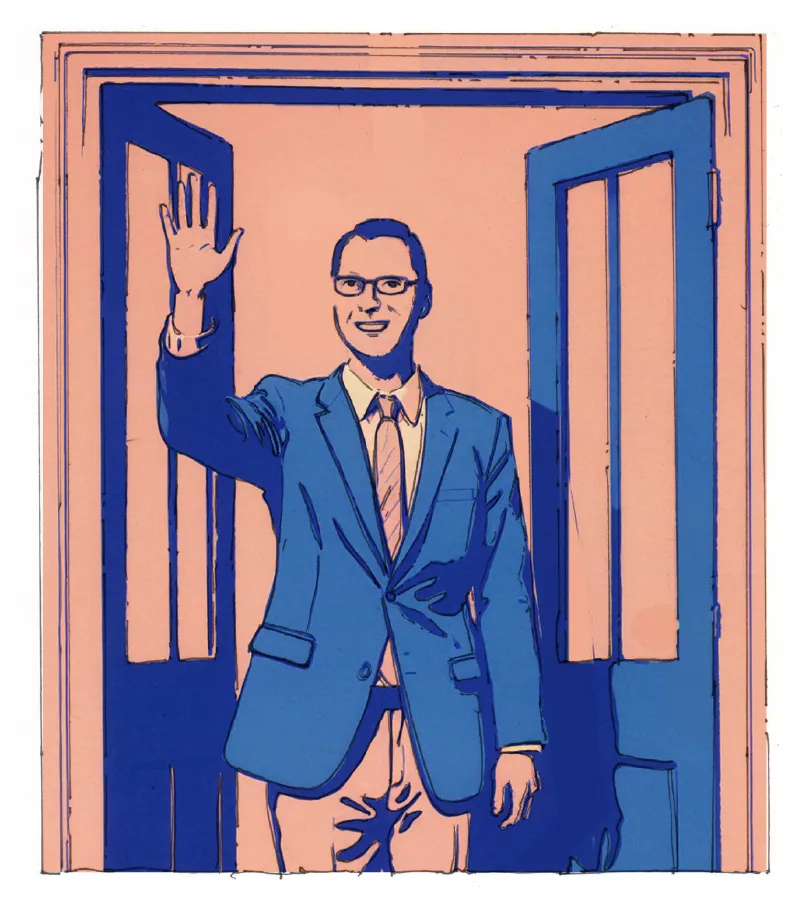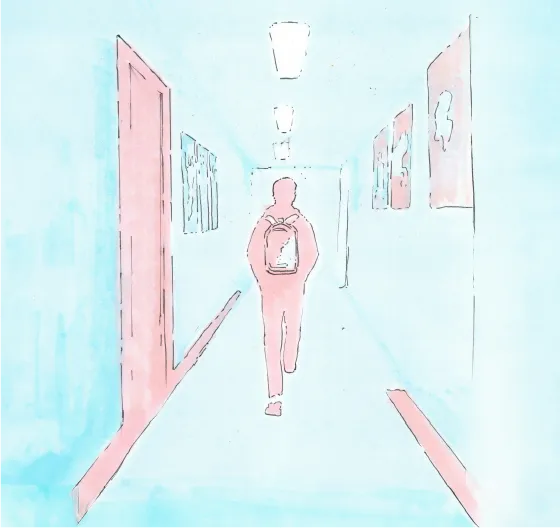The Power of Principals
William D. Parker of “Principal Matters” on how principals are key to strong school experiences.


The Power of Principals
William D. Parker of “Principal Matters” on how principals are key to strong school experiences
If you’re reading this, you likely already know that telling your district’s story is an essential part of keeping your schools healthy and relevant in today’s hypercompetitive education environment. You know that to do this well, school communicators must be aware of the good things happening throughout the district—and you know that the relationship between your schools and your central office can make or break this entire process.
What you may not realize is that there is a cadre of people who can serve as essential conduits between what happens in classrooms and the strategic messaging at the district level. These people are your school principals.
When you think about it, principals have a unique position. While they often serve as part of a district’s executive cabinet, they spend most of their time bouncing between classrooms and meeting with families. They’re familiar with your school board, yet can tell you the names and describe the personalities of many of their students. They’re your most valuable recruiters and also confidants to many struggling parents.
In addition to their other duties, principals are a pivotal part of your district’s strategy for creating and sharing everyday school experiences. Because principals are such busy people, here we’ll explore how to most effectively equip them to create and share positive experiences in their schools—experiences that strategically build into a strong narrative for your district.
A quick note though—elsewhere in this issue, we explore some of the bigger tentpole experiences that will resonate with your stakeholders for decades, such as graduations and open houses. In this article, though, we’ll dig into the smaller day-by-day moments that determine what it’s like to be a part of your school community.
Creating a Strong Culture of Care
In considering how to support principals in their roles both creating and broadcasting strong school experiences, we reached out to education leadership author and “Principal Matters” podcaster William D. Parker. Until 2017, Parker worked as a principal full-time, and he has spent the years since helping other principals navigate the position. What’s more, Parker has become a thought leader on how principals can use day-to-day moments to better communicate the good things happening in public schools.
Make students want to come to school.
Principals are the individuals in your district most responsible for controlling the interactions that teachers, students and families have with your schools. For Parker, this sets up the principal for an incredible opportunity.
“My friend Kim Coody, who’s the principal at Glenpool High School in Oklahoma, always says that it’s the principal’s responsibility to create FOMO for students. While she had to teach me what FOMO was—the fear of missing out—I knew immediately that she was onto something,” Parker explains. “Kim wants principals to figure out how to make school a place where students feel sad if they’re not there. To me, that starts with everything from how you interact with your students to how you build the atmosphere at common times like lunch and arrivals. It’s setting a tone that makes people want to come back to school over and over again.”
Parker admits that this is easier said than done. Schools can feel hectic even when kids are happy and learning. But the practice of prioritizing a positive atmosphere is a necessary part of building spaces where people want to be. While our memories of school are characterized by high points—from the first day of school to graduation—the daily experience is more about the in-betweens. It’s about the feeling that students have when they walk into lunch or how families feel when they walk through your doors for a parent-teacher conference. “I always know I’ve been successful when a visitor comments something like, ‘There’s just something about this place! It feels so welcoming,’” Parker tells us.
As part of this focus on atmosphere, Parker made sure that he was there to greet his students as they came in. “I wanted to set the tone,” Parker explains, “and made sure the space felt like a place they wanted to be.” One of Parker’s favorite tools to accomplish this goal was a television playing slides of student shoutouts. “I would see them talking at the tables with their friends, but their eyes would unerringly float back to the TV screen,” Parker tells us. “The minute one of their friends was featured, they would begin nudging each other and pointing. It never got old.”

Empower stakeholders to co-create these experiences.
For Parker, a strong school culture can’t happen without student leadership. Parker included students in his effort by asking them to take shifts welcoming their classmates to school each morning. “It’s so great to channel all the student energy into being a part of something positive,” he says.
Parker often impressed upon his upperclassmen how crucial they were to creating a positive experience for younger students. “I tried to attend most of the senior and junior class meetings,” he explains. “But when I was there, I knew that I was a listener and a supporter of the student leadership that was naturally emerging.”
As part of this effort, Parker frequently asked his seniors to brainstorm ideas for improving school culture. One year, they had the idea to present awards to students who exemplified kindness and other school values. Their plan was ambitious: They not only wanted to recognize students weekly but also tabulate the good deeds into an annual class cup. Parker was initially worried the idea was not feasible, but his students and teachers assured him that with a strong sense of student ownership and a well-designed Google form, they could do it.
They were right. Each Friday, the seniors passed out awards to fellow students during homeroom and made it a point to verbally thank each recognized individual. Parker feared that they would lose steam once the novelty wore off, but that never happened. As the school year went on, Parker gave regular updates on the class competition, and at the end of the year, a very proud freshman class clinched the first-ever class cup. The best part? Parker was able to share all of this in his weekly newsletter to families and community members. “I loved being able to say to them, ‘Aren’t you glad to be a part of something so great?’” he tells us.
Marketing Memorable Experiences
Think about this last example. Something good happened in Parker’s school, but he recognized that it wasn’t enough to just enjoy the experience—he had to share it with his community. Using insights we gleaned from our own research and our conversation with Parker, we’ve derived three tips you can use to position your principals—and your entire district—for success when it comes to sharing memorable moments.
Help your principals see and document the good.
When we asked Parker the most common hurdle principals face in regards to creating positive day-to-day experiences, he named two main barriers: a lack of time to source and document good things happening in their schools, and an inability to see “beyond the five percent.”
“I’m talking about the five percent of challenges that take up an inordinate amount of a principal’s time,” Parker explains. “Sometimes this is related to student behavior. Sometimes it’s certain individuals consistently taking up large blocks of time. Whatever they are, these challenges make it hard to notice good things happening because you’re physically and mentally preoccupied with them.”
When he was a principal, Parker made a practice of walking around his school after every challenging task to notice what incredible things had been happening while he dealt with the five percent. This helped keep Parker motivated and rooted in his purpose, but it also helped him tackle the second barrier: finding time to document and share the good.
On his walks, Parker would note positive moments taking place in his school. Sometimes, it was a shy student participating in class. Sometimes, it was a particularly innovative classroom activity. No matter what, Parker would end his walk with a quick kudos email to his staff, telling them what he saw and thanking them for contributing to a learning community they could all take pride in. This documentation helped Parker stay upbeat, in touch and ready at any time to report on all the good things happening in his school.

Provide principals with coaching and practice.
In our 2023 study “Layers of Leadership: How Principal-Superintendent Relationships Impact Your District Brand,” we found that many principals are reluctant to start conversations with their superintendents around communication, marketing and branding. Some principals felt that they mostly “communicated up” about challenges and updates, while others admitted outright reluctance to broach a topic that felt somewhat outside of their scope.
But principals are essential. Without them, the district is unable either to realize the vision set at the executive level or to tell the story of what it’s like to learn and work in their schools. Because this area is such a challenge for principals, superintendents (and the communications director, if your district has one) can and should serve as guides and coaches in this space.
Parker believes that many of his fellow principals need practice and feedback about how to best communicate what’s happening in their schools. Internal emails, like Parker’s own kudos emails, are one way to build this skill, but conversations with more experienced school communicators can also help. “I’m a writer and a storyteller, so this comes naturally to me,” Parker tells us. “But many of my colleagues have a totally different skill set and need help not only telling the story, but also drawing attention to the heart of why they’re sharing that story.”
Coaching principals to serve as stronger documentarians and communicators also means allowing them room for failure. Parker shared that it’s easy to feel deflated when you’re trying something new. “School districts, often rightfully, have strong opinions about how communication is handled,” he says. “But there needs to be some room for the principal to build their legacy with their own experimentation.”
Facilitate strong relationships between principals and comms professionals.
In our recent study “A Seat at the Table,” we surveyed 600 school communicators across the country about what they needed to be most effective in their work. Interestingly, while comms professionals reported having both frequent access to and mutual respect with their superintendents, they were much more unsure about their relationships with principals. Some communicators expressed not having enough time to stay in tune with building-level happenings, while others admitted that they felt intimidated by their colleagues with experience more deeply rooted in education.
This finding echoed our previous study on principals. In districts where a communications professional was present, principals were mixed about how well they were able to work with them. Some principals lauded their comms team for sharing the load of internal and external communication. As one principal put it, “We have our district communications team, and we’re really collaborative. I feel really blessed as a principal that they tell me over and over and over that their job is to make my job easier.”
Other principals felt too far removed from their comms pros. One principal even expressed outright frustration: “There’s not a real growth mindset for them [communications professionals] to learn about the instructional pieces and what’s happening in the inner structures. This will be my fourth year, and we’ve never had the director of communications come to our building.”
As you can see, relationships between principals and school communicators fall along a wide spectrum, but superintendents can help build a strong rapport between the two vastly different positions. The work of building this relationship can take many forms, but it likely begins with bringing the teams together with a sense of shared purpose and mutual respect.
We’ve said it before: No one person can be solely responsible for telling your district’s story. In the case of principals, this is true more than ever. Not only are they the ones creating the moments that make it to your district home page and social media; they’re also the ones responsible for sharing that information with the district office. To do this well, they need coaching, guidance and trust. “So many good things happen in a school at any given moment,” Parker says. “Principals just need to understand their role in the overall district storytelling machine.”

